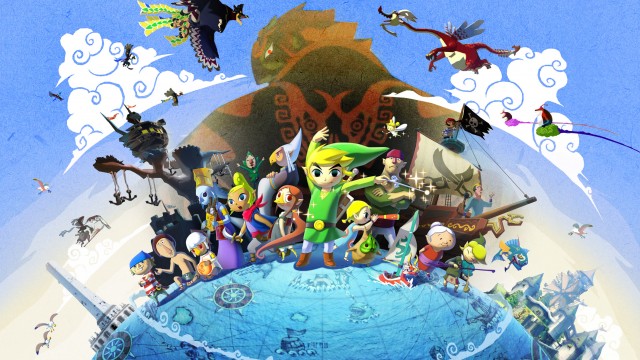The Legend of Zelda: The Wind Waker, as great of a game as it was, was hardly exempt from criticism. Of course, there was the infamous reaction to the cel-shaded graphics, but what about when the game actually came out? Some felt it was too easy, others felt the sailing was too tedious, and there were even complaints of its being too short. That last one’s particularly interesting; I mean, aren’t Zelda games supposed to be sprawling epics?
Believe it or not, this is probably because The Wind Waker was under a tight development schedule; so tight, in fact, Miyamoto and Aonuma themselves have admitted that it was rushed out to Japan’s 2002 holiday season. Consequently, they had to cut dungeons and approve unfinished elements like the Triforce Hunt. Quite a few players didn’t take kindly to the latter, as some were so burned out by its repetition that they stopped playing the game. Bummer.
But let’s ask ourselves: just how much did Wind Waker’s rushed development affect the game’s quality? It’s not without its flaws, yet it remains beloved by many Zelda fans, including myself. When considering how many are willing to overlook any blemishes, is it really okay to just sweep evidence of a rushed work under the rug? For this article, I’ll evaluate how much these cut corners affect the overall game.
For starters, this problem impacts Wind Waker’s structure. Let’s go through a refresher on the game’s first arc: after Link’s failed attempt to rescue his sister, he’s tasked with obtaining the three Pearls of the Goddesses. The first two pearls are obtained after visiting their respective islands’ locales and clearing their dungeons, yet the third one’s where things get clunky. It builds up wonderfully with the destruction of Greatfish Isle, the sea being cursed into an eternal night, blowing up a cavern’s sealed entrance with newly-acquired bombs, and then…it’s just handed to you. No dungeon, no boss.
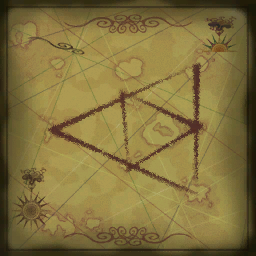
There’s ups and downs to this. Initially, it’s rather disappointing that all that build-up leads to an easy delivery. With how the game takes place in an ocean, you’d think a water dungeon would be a natural inclusion! Apparently, Nintendo thought so too: not only was data for a “Water Boots” item found in the game’s code, but as seen above, there’s visual evidence within the game itself that Greatfish Isle, home of the Water Spirit Jabun, was to be of great importance. What a shame.
Yet, note how the game picks itself up at the same time. The sequence where Link and his companion, the King of Red Lions, is host to some neat plot development (especially if you’re playing the game’s Second Quest, as Jabun’s ancient tongue is translated for your viewing pleasure). Not to mention, you head into another dungeon almost immediately afterward: the beautiful Tower of the Gods. And hey, the dungeon’s first floor is all about rising water levels, so I suppose that counts for something.
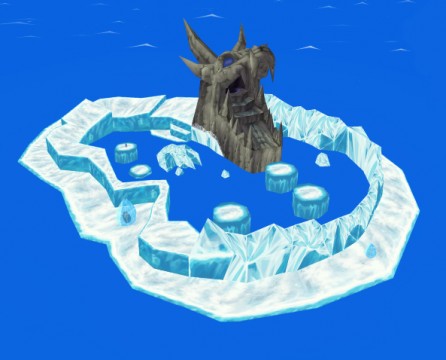
So maybe that’s not so bad, but what about the other cut dungeons? Truth be told, we have no idea how many were cut, but much suspicion surrounds two other locations in the game: Fire Mountain and Ice Ring Isle. These islands serve as precursors to two dungeons (respectively, Earth and Wind), where you acquire essential gear to access those particular areas. What’s interesting about these islands is that Link has to brave their inner elements (such as avoiding lava and icy winds) under a ticking timer; consequently, fans have dubbed Fire Mountain and Ice Ring as mini-dungeons.
For argument’s sake, let’s say these are the cut dungeons. Abridged as they may be, their presence in The Wind Waker doesn’t affect the pacing. Their respective objectives don’t come across as padding the game, as they involve Link spelunking into more dangerous caverns. In that sense, they accomplish in building upon the game’s sense of adventure, all the while giving the player a proper warm-up before venturing into the game’s real dungeons. All well and good, right?
Well, not so fast. Our final problem tackles the elephant in the room: the Triforce Quest. Immediately after clearing the Wind Temple, Link has to hunt for the seven pieces of the Triforce of Courage. Relying on Tingle’s IN-credible chart, he has to hunt down maps all over the Great Sea, have the manchild Tingle himself decipher these charts for 398 Rupees apiece, then go recover the Triforce piece. Bear in mind you have to do this entire process seven times. Needless to say, this kills the game’s pacing.
What’s interesting here is how this all happens right before the end of the game. Many suspect the rest of the cut dungeons were located here before they were discarded, and fingers are often pointed at the aforementioned Fire Mountain/Ice Ring caverns. If that’s the case, it’s a mystery as to how they would’ve been implemented. Would the Triforce of Courage fetch quest have been retained for these dungeons? Would Fire Mountain have been all that distinct from Dragon Roost Cavern? We’ll probably never know, even with Nintendo’s claim that these discarded dungeons were later revived for future Zelda games.
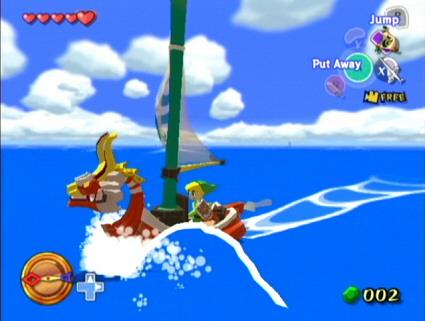
Regardless, there’s the fact that many took issue with the fetch quest we were presented with. Many already felt sailing the wide waters of the Great Sea took too long as it was, and that happened to compose 90 percent of this segment. What’s an even bigger issue is that more than a few of these pieces were obtained through the same process: fighting enemies in a bunch of rooms. For the occasional inspired idea it throws at you (such as encountering a ghost ship!), it may very likely result in an equally uninspired brawl. Yawn.
But wait, you might say, there’s the HD remaster for Wii U! Indeed, that version took great care in fixing the game’s original flaws: there’s faster text, faster animations, a faster sail…why, the developers even bothered to streamline the Triforce Quest! Most of the shards are automatically handed to you, and you’re left to search only for three. On paper, that’s a great change…yet, making it faster presents an unfortunate side-effect. Dwindling the quest to such few shards further highlights just how shorehorned and clumsy it is, and as it’s over too quickly, it feels all the more pointless. Oops.
There’s just no easy answer for this. As this particular segment brings out the most annoying of Wind Waker’s flaws, whether or not it’s tolerable depends on your levels of, well, tolerance. In fact, one could even say the entirety of The Wind Waker is a lesson in patience. If you’re one of those who couldn’t stand sailing and its long wait times, then it’d be a hardly a surprise if you dropped the game during the Triforce Quest.
As for me? Not only do I tolerate it, I actually enjoy it! It’s not that I don’t recognize it as a flaw, of course, but sailing happens to be one of my favorite parts of the game. Not only do I find the process rather cathartic, but I personally feel there’s nothing more exciting than setting sail to distant specks in the distance and discovering new islands and caves. Any fumbles aside, The Wind Waker still encapsulates the adventure of Zelda within a brand new setting, and perhaps that’s why it’s still my favorite Zelda game after all these years. I know others feel the same way.
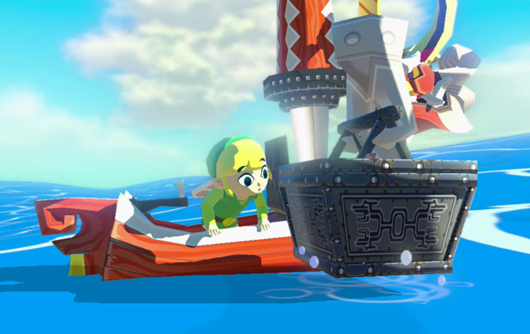
In conclusion, enjoying The Wind Waker depends on how much you’re willing to play ball with its shortcomings. The Triforce Quest and other cut corners can be frustrating, but there’s plenty of ocean hijinks and beautiful landmarks to enjoy. While not up there with Zelda’s true masterpieces (Ocarina, Majora, A Link to the Past and Link’s Awakening), The Wind Waker remains one of its most memorable titles.




 ShareThis
ShareThis